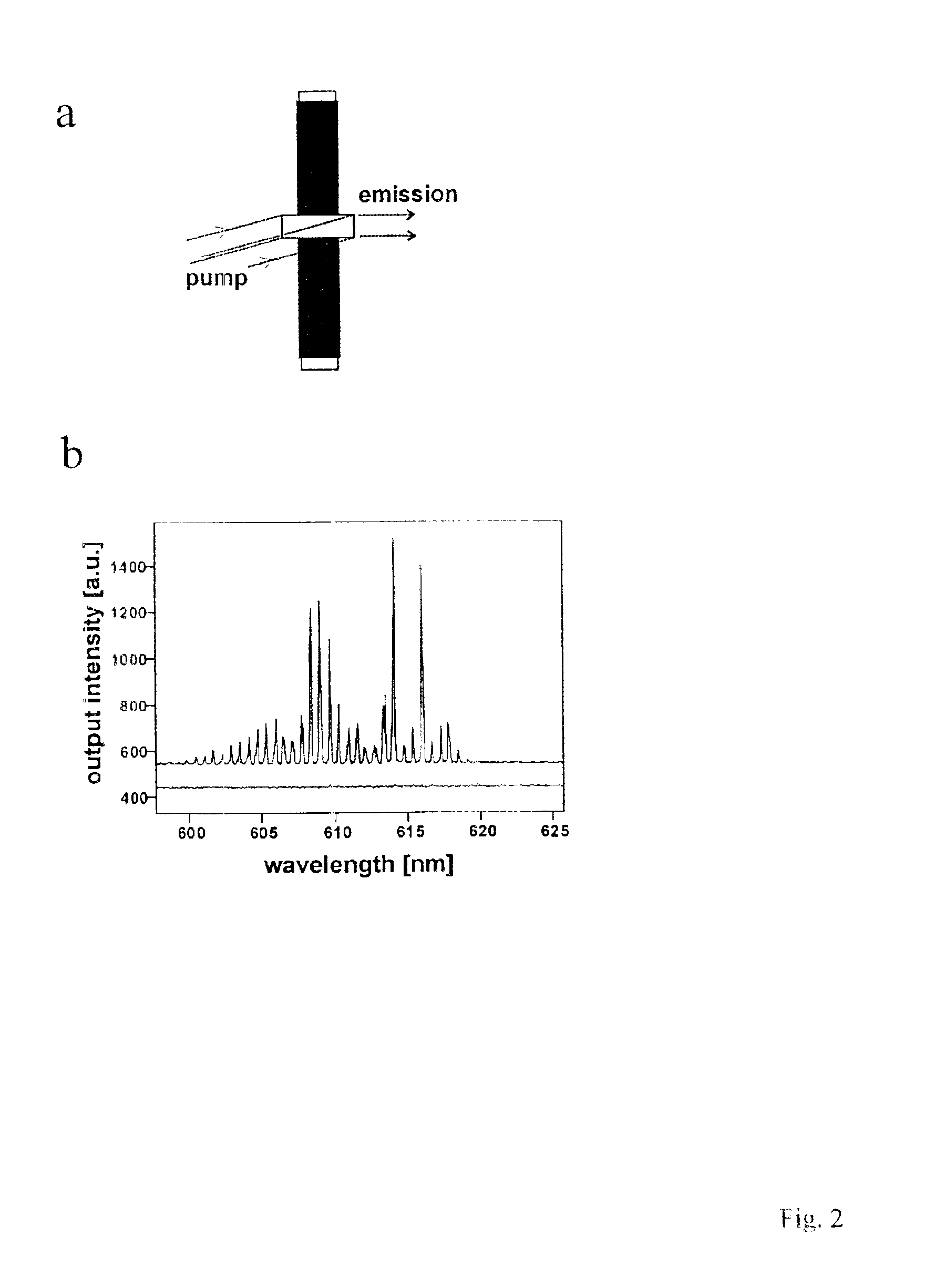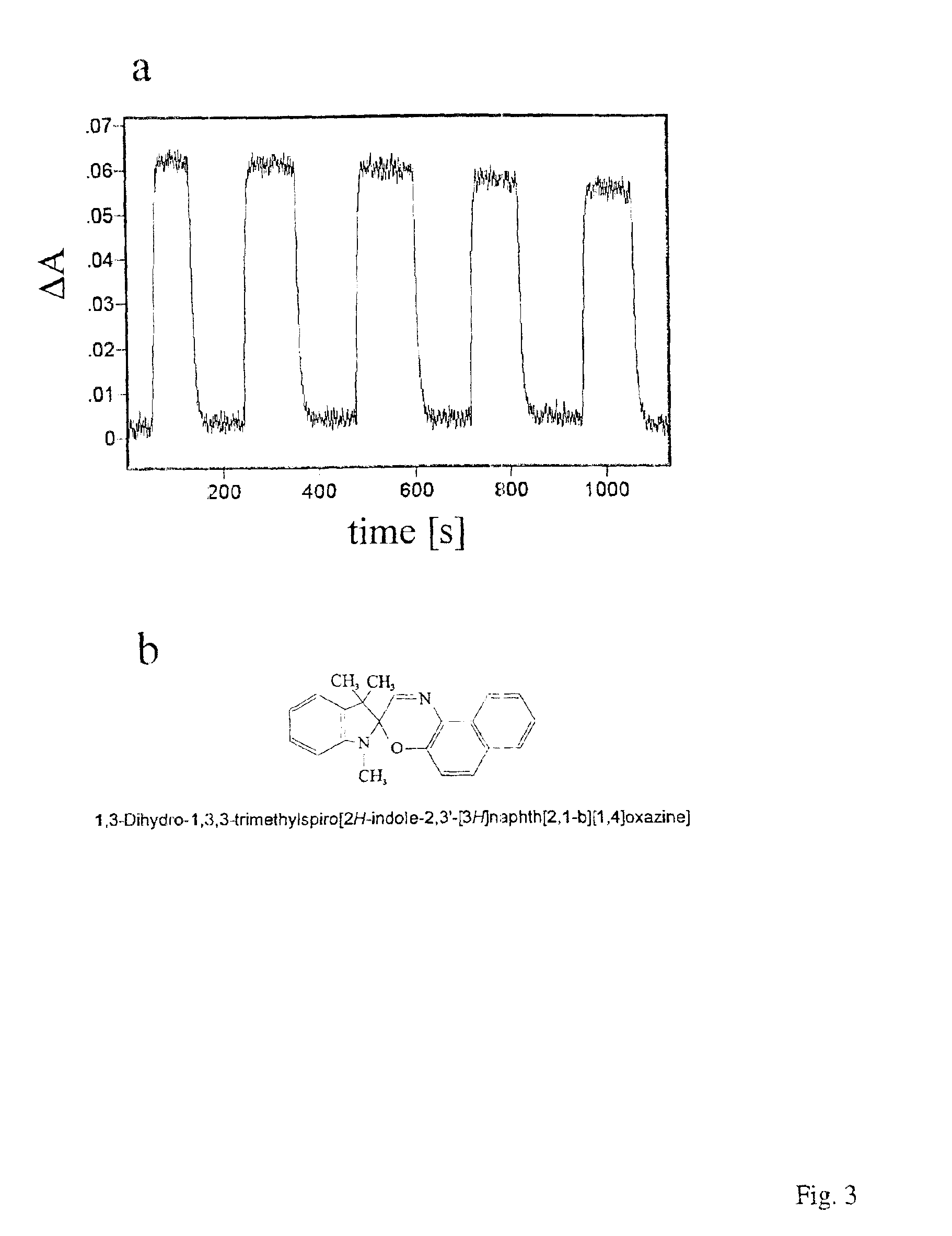Inorganic/block copolymer-dye composites and dye doped mesoporous materials for optical and sensing applications
a composite material and dye-doping technology, applied in the field of transparent solids, can solve the problems of limited incorporation of optically responsive compounds or other property restrictions that restrict their utility for device applications, low dye-doping concentrations, and low concentrations of inclusion of optically responsive agents in crystalline solids, so as to achieve high dye-doping concentration, enhance dye dispersion, and fast optical switching
- Summary
- Abstract
- Description
- Claims
- Application Information
AI Technical Summary
Benefits of technology
Problems solved by technology
Method used
Image
Examples
Embodiment Construction
I. General Purpose or Utility
[0047]The use of as-synthesized mesostructured materials as host media for dye or optically responsive molecules offers a new route to optical materials with advantageous characteristics, including low-threshold lasing, optical limiting, and ultrasensitive chemical and biological detection properties. These materials are useful as waveguides, laser materials, optical switches and interconnects, optical amplifiers, delay generators and sensors, as well as in other optical applications. Furthermore, the attractive processability of inorganic-block copolymer composites permits straightforward engineering of the materials into a variety of macroscopic shapes, including films, fibers, and monoliths. Inexpensive, easy, and fast preparations should make these materials suitable for large-scale production of optical components. Extensions of these materials for optical applications obvious to those skilled in the art include the incorporation of semiconductors, ...
PUM
| Property | Measurement | Unit |
|---|---|---|
| Time | aaaaa | aaaaa |
| Pressure | aaaaa | aaaaa |
| Amphiphilic | aaaaa | aaaaa |
Abstract
Description
Claims
Application Information
 Login to View More
Login to View More - R&D
- Intellectual Property
- Life Sciences
- Materials
- Tech Scout
- Unparalleled Data Quality
- Higher Quality Content
- 60% Fewer Hallucinations
Browse by: Latest US Patents, China's latest patents, Technical Efficacy Thesaurus, Application Domain, Technology Topic, Popular Technical Reports.
© 2025 PatSnap. All rights reserved.Legal|Privacy policy|Modern Slavery Act Transparency Statement|Sitemap|About US| Contact US: help@patsnap.com



